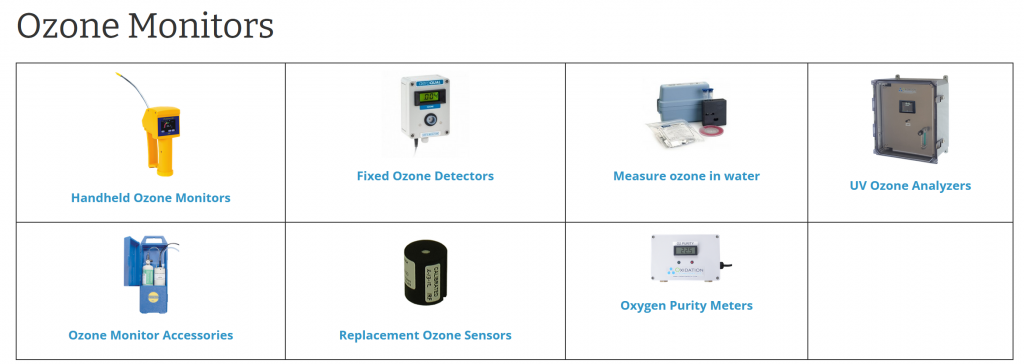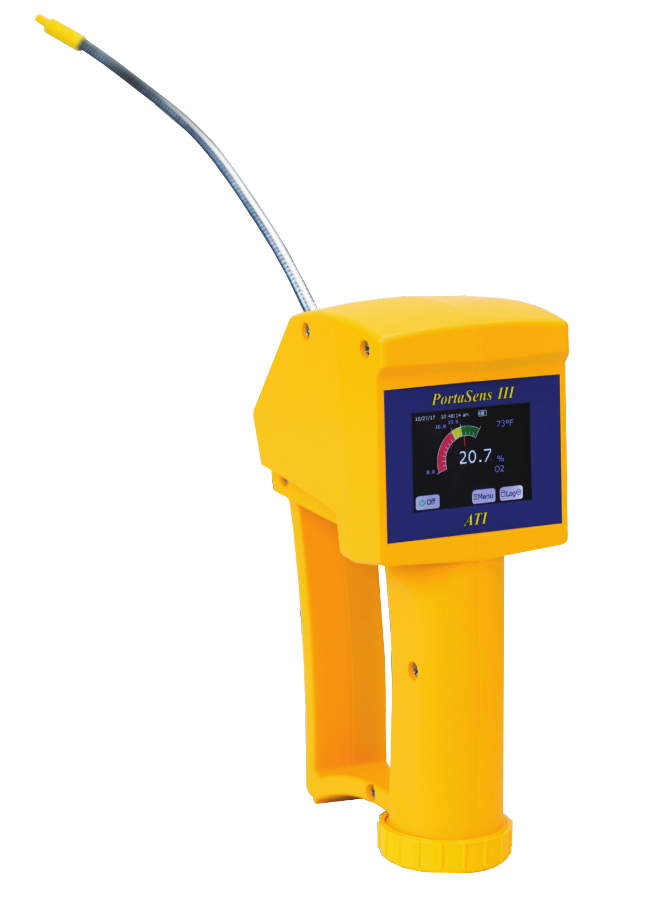Ozone is a molecule that contains three oxygen atoms that are constantly destroyed and formed in the stratosphere. The ozone layer is of great significance as it is responsible for absorbing the harmful radiation from the sun, preventing it from reaching the Earth’s surface.
Several layers compose the Earth’s atmosphere. The troposphere is the lowest layer that extends from the Earth’s surface up to about 10 kilometers in altitude, comprising most of man’s activities.
The next layer, which lies between 10 kilometers above the Earth to 50 kilometers, is the stratosphere. This is the area in which most commercial airplanes fly. The stratosphere is the layer that contains most atmospheric ozone.
The ozone layer absorbs a portion of radiation known as Ultraviolet B (UVB); UVB has shorter wavelengths and is linked to effects like cataracts, skin cancers, damage to some crops, and a danger to aquatic life.
Brief Background Of Ozone Sensors
The ozone plays an important role in protecting life on the surface of the Earth by shielding the harmful rays of the sun from reaching the surface. The catastrophic exposure to ground-level ozone has on life on Earth, ozone levels must be closely monitored.
A critical component of air quality management involves measuring ozone concentrations in the atmosphere and ambient air. Different technologies have been developed to monitor ozone concentrations. Ultraviolet absorption has been the basis of conventional monitoring devices in the past.
These methods have been expensive, consume a lot of power for their operation, and are cumbersome to use. They are usually at fixed locations and hence are not portable.
Experimental Research On Ozone Sensors
Because of the importance of knowing ozone levels in air quality and the stratosphere, several types of investment are placed on improving ozone sensors. In a recent study in which an electrochemical sensor (OXB421, Alphasense) was used in a miniaturized ozone measuring device that was combined with a lab jack. This device was compared with some conventional systems used to measure or monitor ozone concentrations.
Electrochemical sensors were able to produce a voltage signal proportional to the ozone concentrations between the ranges of 5ppb-10ppm. The influence of gas sample flow and the relative humidity (RH) were also put into consideration and investigated separately.
A rapid change in the RH of approximately 20%/min generated significant and instant changes in the signals of the sensors. In contrast, slow changes In the relative humidity of 0.1%/min had a little or negligible effect on the response from the sensor.
The miniaturized ozone detecting device was tested for real-world applications as it was exposed to both laboratory experiments. The loss of ozone as a result of seawater uptake was measured.
In another instance, air quality was monitored over 18 days. It was discovered that sensor measurements were close to those recorded from previous studies using conventional sensors.
For the 18 days of air quality monitoring, the data collected by the sensor was in agreement with data collected by the reference UV ozone analyzer.
The purpose of this study was to investigate miniaturized electrochemical sensors to measure ozone in both ambient air quality monitoring and laboratory conditions to have this device be used as an alternative from the conventional devices. This miniaturized electrochemical sensor is cheaper, consumes less power, and is portable, making it more convenient to use.
Challenges Of Ozone And Ozone Sensing
Today, commercially available ozone sensors are based on either semiconductor ozone sensors or electrochemical principles. These sensors, in principle, have sufficient sensitivity to sense ozone in parts per billion (ppb) and are suitable for outdoor air quality monitoring.
They are low-cost, allowing them to be deployed in denser networks to measure air quality networks and give a more improved insight into human exposure levels. Ozone measurement is vital to air quality management and experimental research regarding atmospheric chemistry, such as ozone interaction with chemicals in the atmosphere and the surface of the Earth.
Traditional photometric ozone instruments that have existed until now were based on UV absorption and required a high sampling gas flow of greater than 1L/min and consumed too much power.
These types of ozone sensors were often too expensive, and using them on some occasions was impossible such as during smog chamber simulation experiments where the volumes or flow rate of the gases were not high enough to be measured by the sensors.
In such incidents, optical methods such as cavity ring-down spectroscopy (CRDS) are employed, but this method of air quality monitoring is costly, and this specialized equipment is not often found in monitoring facilities.
Another challenge faced is that such equipment or instruments are bound to their set locations, making them immobile and connected to the AC power supply in secure
Ground-level ozone is not directly emitted into the ambient air but is formed as a result of chemical reactions that occur between volatile oxides (VOCs) and nitrogen oxides (NOXs).
These pollutants are emitted by cars, power plants, refineries, boilers, and chemical plants. Ground-level ozone increases on hot sunny days in urban environments and can also reach rural areas due to transportation by the wind.
Ozone present in the air we breathe can be harmful, causing respiratory and other diseases to humans. High exposures can affect ecosystems and vegetation, including parks, forests, and wilderness areas. Therefore it is important to know the levels of ozone we may be exposed to during the day; this information can be accessed from daily air quality or weather monitoring.
Future of Ozone Sensors
More research has been undertaken to produce affordable, mobile, less cumbersome ozone sensors which do not require high flow rates to sense ozone concentrations. This will greatly improve air quality monitoring, help us understand more about atmospheric chemistry, protect us from the effect of ground-level ozone, and prevent damage to the ozone layer as a result of chemicals being released as a result of human activities.
References and Further Reading
Ripoll, A., Viana, M., Padrosa, M., Querol, X., Minutolo, A., Hou, K.M., Barcelo-Ordinas, J.M. and García-Vidal, J., (2019) Testing the performance of sensors for ozone pollution monitoring in a citizen science approach. Science of the total environment, 651, pp.1166-1179. https://www.sciencedirect.com/science/article/pii/S004896971833701X
Pang, X., Shaw, M.D., Lewis, A.C., Carpenter, L.J. and Batchellier, T., (2017) Electrochemical ozone sensors: A miniaturised alternative for ozone measurements in laboratory experiments and air-quality monitoring. Sensors and Actuators B: Chemical, 240, pp.829-837. https://www.sciencedirect.com/science/article/pii/S092540051631437X



